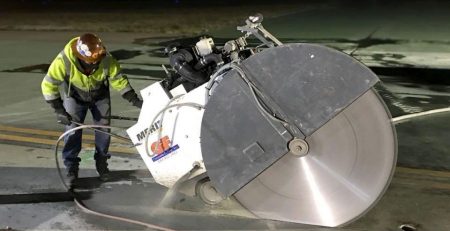Diamond Drillers Jargon-Busting Guide
When it comes to diamond drillers, many names are used interchangeably for the same purpose. For example, diamond drillers may be diamond drilling contractors, or it may relate to the process of concrete cutting and stone cutting. In the world of drilling, the language in the job can be confusing for those not in the know. This is why we have created this article to help you get to know the lingo that your diamond drillers may use on-site.
Key Phrases That Diamond Drillers Use
Some phrases may seem obvious but actually have a different meaning for diamond drilling contractors, here are some of the terms you may hear by your diamond drillers;
Kerf
Kerf is a term that replaces ‘wall’. Alternatively, it will refer to the distance between the outside diameter and the inner diameter. Sometimes, you may hear the abbreviated of TK, which stands for ‘thin kerf’.
Mohs Scale
The Mohs Scale measures the hardness of minerals. The scale ranges from one to ten, going from the softest to the hardest minerals. For example, talc would have a score of one on the measure while diamond (the hardest mineral) is a ten. This is why we use diamonds for drilling, because it is the hardest mineral so, therefore, can cut through all minerals lower than a ten on the Mohs Scale.
Drilling Cycle
Diamond drillers follow a clear process when operating that is known as the drilling cycle. The cycle includes rotating the drill in the hole, filling up the tube and emptying the core from the tube. The drilling cycle is relatively consistent for all projects with only slight changes for the location and conditions.
Waterway
For diamond drillers, it is essential to allow water to pass through the cuttings. Usually, the waterway is a small space that sits in the crown of the core bit. This then enables drill water to pass through. Depending on what is being drilled, the waterway will then carry the way from the bottom of the hole the drill has created to the top of the borehole.
Bit Balling
In some cases, clay, mud and shale can stick to the drill bit which can then create a ball on the end of the drill bit. Thus the name bit balling. Bit balling is an inconvenience as it can then hamper the rate of penetration as well as causing a problem for the surface torque. If clay is common in the work area, then diamond drillers may use an additive (drilling fluid additives) that can prevent the clay from swelling and sticking to the drill bit.
What You Need To Know About Diamond Drillers
Clean Cut Drilling has a team of expert diamond drillers who focus on delivering high-quality precision drilling with a smooth, seamless service. We have the knowledge and expertise for all manner of drilling requirements, regardless of the ground conditions or environment we will work in. While the jargon we use may sound confusing, you can trust us to deliver a fantastic service whether you require diamond core drilling or stitch drilling.
Book us for your next project by calling 01908 926 678 to receive your free quotation.




